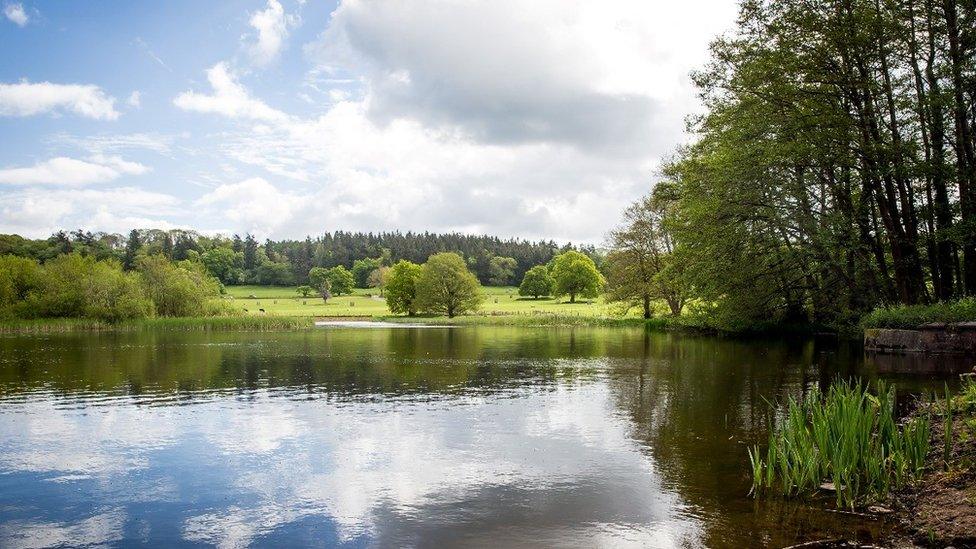Herefordshire estate's restored pool is wildlife haven
- Published

Dozens of species have returned to the pool since the restoration
The restoration of a pool on a Herefordshire estate has led to a biodiversity boom, owner the National Trust has said.
The landscape at Berrington Hall near Leominster was created by renowned designer Lancelot "Capability" Brown.
However, it had become overrun with reeds and silt, badly affecting wildlife in the area.
A restoration, backed by National Highways, has seen dozens of species identified in and around the water.
Among the 38 birds identified are great white egrets, water rails, green sandpipers and kingfishers.
As the largest heronry in the West Midlands, the pool is also a Site of Special Scientific Interest (SSSI) due to the large number of the birds nesting on its island each year.
Large swan mussels and otter footprints were also spotted in and around the pool, National Highways said.

The pool will reopen to visitors later this year
The pool was named after Capability Brown, who completed the estate before his death in 1783.
"The biodiversity of the pool had been adversely affected over the years due to the spread of reed cover and accumulation of silt," said Iain Carter, the National Trust's countryside manager.
"Large carp had become the dominant fish species and very few smaller fish remained, which may have impacted the heronry, for which population numbers had sadly declined over the last 10 years.
"It was therefore vital that we intervened to restore the pool and ensure the survival of the SSSI and the heronry."
National Highways provided funding due to its proximity to the A49.
Andy Butterfield, from the organisation, said he was "looking forward to seeing nature flourish now the work is complete".
The site will reopen to visitors later in the year.

Follow BBC West Midlands on Facebook, external, Twitter, external and Instagram, external. Send your story ideas to: newsonline.westmidlands@bbc.co.uk, external